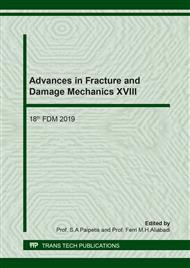p.37
p.43
p.49
p.55
p.61
p.67
p.73
p.79
p.85
Production and Characterization of Boride Coatings on Steels
Abstract:
Boride coatings on steels have an excellent combination of properties. They can significantly improve the hardness, the wear and corrosion resistance of steels. Boronizing of steels has been achieved using different methods such as pack cementation and paste boriding. On the other hand, fluidized bed technology has been successfully used in many surface engineering applications in the deposition of hard and / or corrosion resistant layers e.g. carburizing, aluminizing and chromizing. This method is simple, efficient and environmental friendly and is characterized by excellent heat and mass transfer, which results to improve quality of the as-produced coatings. As a result, fluidized bed technology can be considered as a useful alternative method for the production of boride coatings on steel substrates. In the present paper we used this method to deposit boride coatings on steels. The as-produced coatings were examined by means of optical microscopy, X-Rays diffraction, Vickers microhardness and pin on disk in terms of coatings thickness and morphology, phase formation and mechanical properties. It was found that they are characterized by good adherence and uniformity all over the substrate and showed improved tribological properties under dry wear conditions.
Info:
Periodical:
Pages:
61-66
Citation:
Online since:
December 2019
Keywords:
Price:
Сopyright:
© 2020 Trans Tech Publications Ltd. All Rights Reserved
Share:
Citation:


